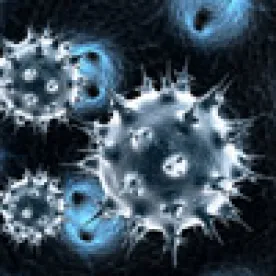Concerns about the spread of Zika virus and potential complications associated with infection may soon lead to new research and development opportunities for government contractors and grant recipients. Similar to developments after the recent Ebola outbreak in West Africa, a need to better understand Zika’s characteristics and develop an effective countermeasure or vaccine has led both domestic and international public bodies and private industry to begin mobilizing resources in response to the virus. As a result, both new and existing contractual vehicles will likely be used to fund a wide array of activities, extending from epidemiological studies to the development of new diagnostics and countermeasures.
Similar to yellow fever, dengue, West Nile, and Japanese encephalitis viruses, Zika is a flavivirus that is generally transmitted through mosquitoes. Although Zika was first discovered in 1947, it has only recently been identified as a significant threat to public health based on a potential connection between Zika and microcephaly in newborns—a condition associated with incomplete brain development. Recent events have also provided additional evidence of a potential link between Zika and Guillain-Barré syndrome, which is a nervous system disorder that could affect Zika’s carriers.
Previously, the virus was understood to have relatively limited consequences, only causing mild, flu-like symptoms in one of five of its hosts. However, an outbreak of the virus in French Polynesia in 2013 and 2014 has now been associated with an increase in cases of Guillain-Barré syndrome. In addition, an ongoing outbreak of the virus that began in Brazil last year has affected over one million individuals and been linked to both an increased incidence of Guillain-Barré syndrome and a dramatic rise in cases of microcephaly. Zika RNA has been discovered in the amniotic fluid of women with affected fetuses in Brazil, and a recent report indicates that an affected newborn in Hawaii acquired Zika in the womb.
Although Zika’s geographic range has historically been limited to Asia and Africa, a sudden outbreak of the virus in the Federated States of Micronesia in 2007 and its subsequent spread to South and Central America and the Caribbean suggest that it may ultimately become established in the United States. A number of cases of infection due to travel have already been reported in the continental United States, with local transmission through mosquitoes occurring in Puerto Rico, the U.S. Virgin Islands, and America Samoa. Public health officials have suggested that a significant outbreak in the United States is unlikely. However, a recent study confirms that approximately 60 percent of the United States’ population lives in areas that could be conducive to the virus’s spread.
Zika’s potential range may ultimately be limited by its typical transmission through mosquitoes that are found in warmer climates. If the virus is confirmed to be readily carried through a different type of mosquito that can survive in cooler temperatures, however, the virus could affect more areas in the United States than currently anticipated. Local transmission of the virus through sexual intercourse has recently been reported in Texas, which could also present additional risks for individuals in contact with travelers returning from an area in which Zika is prevalent.
U.S. Government and international agencies are acting quickly to establish programs to manage the spread of the virus. The epidemiological characteristics of Zika are still not fully understood, and there are currently no vaccines or treatments available. In addition, existing diagnostics could be significantly improved. As a result, publicly funded research and development activities are already either planned or underway to address these gaps.
For example, the Director-General of the World Health Organization facilitated publicly funded efforts by declaring this week that Zika represents a Public Health Emergency of International Concern. Similar declarations have only been issued in three other circumstances, respectively involving H1N1 influenza virus,polio, and Ebola. The European Commission has also recently mobilized public health resources to fund Zika research.
In the United States, the Committee on Energy and Commerce of the U.S. House of Representatives has sent letters requesting briefings from the heads of the National Institute of Allergy and Infectious Diseases (NIAID), the U.S. Centers for Disease Control and Prevention (CDC), and the Office of the Assistant Secretary for Preparedness and Response of the U.S. Department of Health and Human Services, which oversees the Biomedical Advanced Research and Development Authority (BARDA) and the Office of Acquisitions, Management, Contracts & Grants (AMCG). The letters target specific issues associated with the current gaps in the Zika response, including:
- The need to establish a causal link between Zika and both microcephaly and Guillain-Barré syndrome;
- The need to better understand Zika’s epidemiological characteristics and establish reliable modeling;
- Improvements to existing diagnostics; and
- The development of effective countermeasures, such as vaccines and antiviral therapeutics.
The letters also suggest that U.S. agencies may ultimately be asked to repurpose current projects and emergency Ebola funding. A bill has already been introduced in the House of Representatives that would allow agencies to fund Zika projects with what reportedly amounts to approximately $1.4 billion in unused Ebola funding. In addition, representatives of NIAID and CDC have confirmed that they are already working with industry to address the issues raised by Congress through new and existing projects and have established multiple research partnerships that are either underway or about to begin.
In particular, NIAID has already spent approximately $97 million on flavivirus research—likely resulting from two broad agency announcements issued in 2010 and 2014 covering studies for rare or emerging viral infectious diseases. NIAID has also promised to immediately supplement existing grants to include work specifically related to Zika. NIAID expects phase one trials for Zika countermeasures to begin this year using processes established in countermeasure development for other viruses and a vaccine template based on West Nile virus materials. Although the existing West Nile template was purportedly not developed into an approved vaccine because NIAID could not convince industry partners to assist with advanced development efforts under prior funding opportunities, discussions on potential uses for the template are already underway.
NIAID has also published a notice identifying ten areas of high priority for Zika projects, ranging from basic research to countermeasure development, that can be funded under existing financial assistance vehicles. The CDC has similarly updated an existing funding announcement for Ebola preparedness and response activities to allow state and local cooperative agreement holders to address Zika in their proposals. Although BARDA and AMCG have yet to issue similar guidance with respect to existing funding opportunities, they may collaborate under a new broad agency announcement similar to their efforts to combat Ebola, which we previously covered in 2014. Key components of the U.S. Department of Defense that participated in the Ebola response—including the Defense Threat Reduction Agency, the Defense Advanced Research Projects Agency, and the U.S. Army Medical Research Institute of Infectious Diseases—may also issue new funding announcements in the coming months in addition to working with laboratories like the National Biodefense Analysis and Countermeasure Center. President Barack Obama recently met with the heads of these civilian and military agencies and emphasized the need to accelerate research, improve diagnostics, and develop effective countermeasures.
Given the intense focus of U.S. and international public officials on developing a comprehensive response to the recent Zika outbreak, and that private industry has already begun efforts to develop a Zika vaccine andalternative methods of vector control, new, significant public funding opportunities for government contractors and grant recipients may be available in the relatively near future. Companies interested in taking advantage of these opportunities should be aware of the impact of public funding on their intellectual property portfolios and differences in intellectual property rights that can be negotiated under distinct contractual vehicles, including “other transaction authority,” cooperative research and development, and small business innovation research agreements. The availability of a particular vehicle is generally controlled by the nature of the opportunity, varying across traditional solicitations for the procurement of goods or services, broad agency announcements, requests for applications for financial assistance, unsolicited proposals, and, if ultimately relevant, opportunities under the Defense Production Act.
Companies engaged in such work should also be cognizant of potential indemnification and liability protection that may be available for Zika-related work. Depending on the nature of a particular project, indemnification may be available for unusually hazardous risks under 10 U.S.C. § 2354, 42 U.S.C. § 241, orPublic Law 85-804—although the protections offered by the first two authorities are limited by the availability of appropriated funds. Securing immunity from suit or liability under U.S. law may also be possible for certain countermeasures if—as was recently seen with the response to Ebola—the Secretary of the U.S. Department of Health and Human Services issues a declaration under the Public Readiness and Emergency Preparedness or “PREP” Act. Government agencies may be flexible in negotiating agreements in order to quickly establish a comprehensive Zika response.





 />i
/>i
